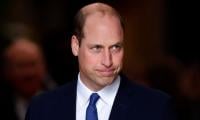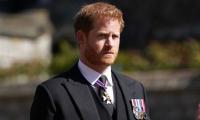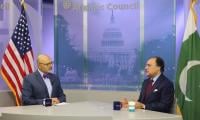At the beginning of February 2019, the two leading nuclear powers took an official step toward resumption of the nuclear arms race. On February 1, the US government, charging Russian violations of the Intermediate-Range Nuclear Forces (INF) Treaty, announced that it would pull out of the agreement and develop new intermediate-range missiles banned by it. The following day, Russian President Vladimir Putin suspended his government’s observance of the treaty, claiming that this was done as a ‘symmetrical’ response to the US action and that Russia would develop nuclear weapons outlawed by the agreement.
In this fashion, the 1987 Soviet-American INF Treaty – which had eliminated thousands of destabilizing nuclear weapons, set the course for future nuclear disarmament agreements between the two nuclear superpowers, and paved the way for an end to the Cold War – was formally dispensed with.
Actually, the scrapping of the treaty should not have come as a surprise. After all, the rulers of nations, especially ‘the great powers’, are rarely interested in limiting their access to powerful weapons of war, including nuclear weapons. Indeed, they usually favor weapons buildups by their own nation and, thus, end up in immensely dangerous and expensive arms races with other nations.
Donald Trump exemplifies this embrace of nuclear weapons. During his presidential campaign, he made the bizarre claim that the 7,000-weapon US nuclear arsenal “doesn’t work”, and promised to restore it to its full glory. Shortly after his election, Trump tweeted: “The United States must greatly strengthen and expand its nuclear capability”. The following day, with his customary insouciance, he remarked simply: “Let it be an arms race”.
Naturally, as president, he has been a keen supporter of a $1.7 trillion refurbishment of the entire US nuclear weapons complex, including the building of new nuclear weapons. Nor has he hesitated to brag about US nuclear prowess. In connection with his war of words with North Korean leader Kim Jong-un, Trump boasted: “I too have a Nuclear Button, but it is a much bigger and more powerful one than his”.
Russian leaders, too, though not as overtly provocative, have been impatient to build new nuclear weapons. As early as 2007, Putin complained to top-level US officials that only Russia and the United States were covered by the INF Treaty; therefore, unless other nations were brought into the agreement, “it will be difficult for us to keep within the [treaty] framework”. The following year, Sergey Ivanov, the Russian defense minister, publicly bemoaned the INF agreement, observing that intermediate-range nuclear weapons “would be quite useful for us” against China.
By 2014, according to the US government and arms control experts, Russia was pursuing a cruise missile program that violated the INF agreement, although Putin denied that the missile was banned by the treaty and claimed, instead, that the US missile defense system was out of compliance. And so the offending missile program continued, as did Russian programs for blood-curdling types of nuclear weapons outside the treaty’s framework. In 2016, Putin criticized “the naïve former Russian leadership” for signing the INF Treaty in the first place. When the US government pulled out of the treaty, Putin not only quickly proclaimed Russia’s withdrawal, but announced plans for building new nuclear weapons and said that Russia would no longer initiate nuclear arms control talks with the United States.
This article has been excerpted from: ‘Don’t Expect Rulers of Nuclear-Armed Nations to Accept Nuclear Disarmament – Unless They’re Pushed to Do So’.
Courtesy: Commondreams.org
As usual, any such deal, aiming to resuscitate ailing economy, brings to fore urge and resolve to halt further...
A representational showing sticky notes on a board. — Unsplash/FileThere are some common themes from the lives...
Whether the Daanish Schools effort has been able to live up to its principles or not may be debatable
According to the federal government, last year 653,100 people experienced homelessness on a single night in America
Another advantage for Pakistan is the enhanced teledensity and internet penetration
Both media spheres need to dovetail in amplifying the urgency of addressing climate change at the local, national, and...







